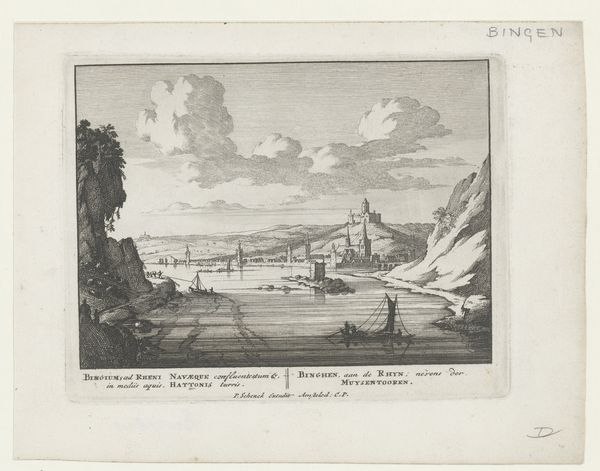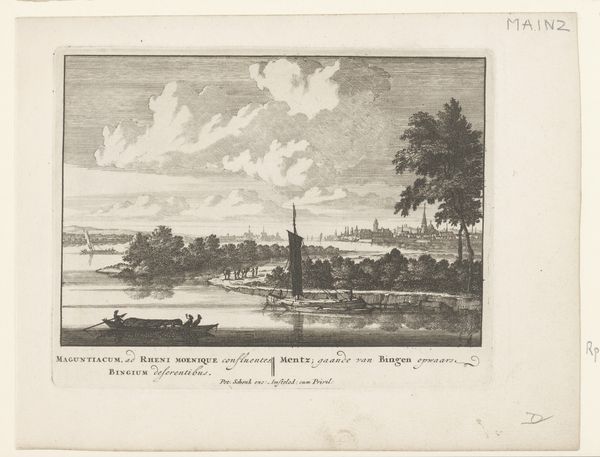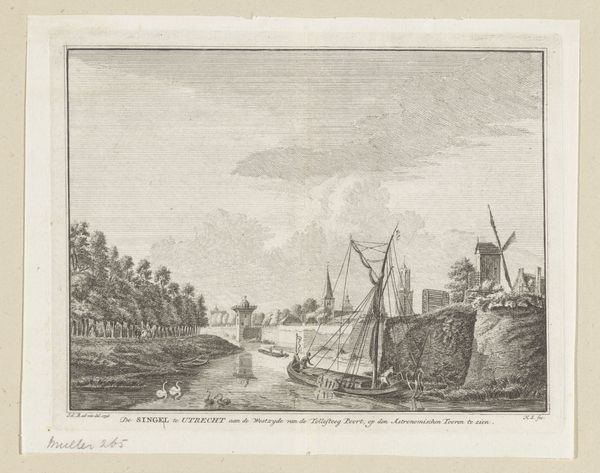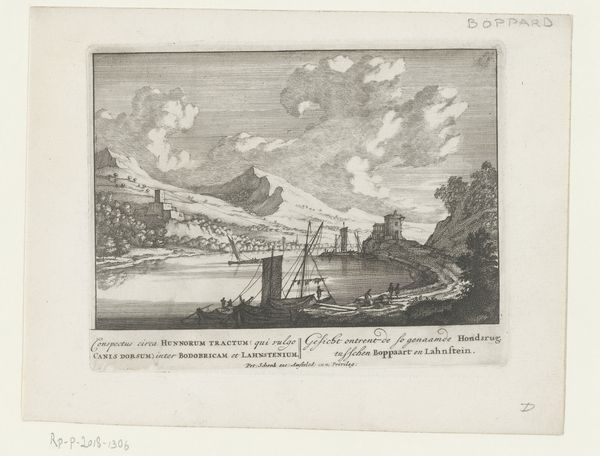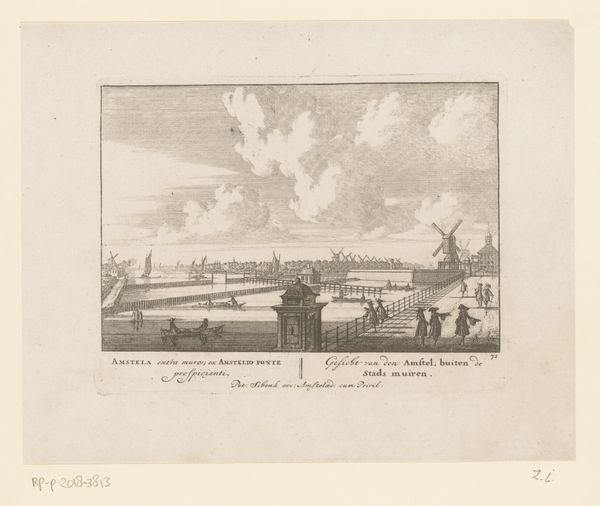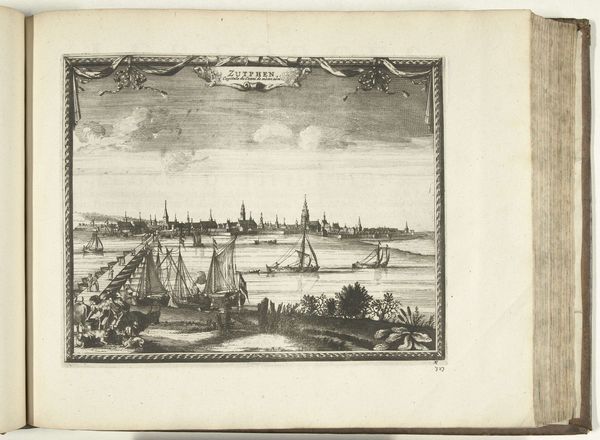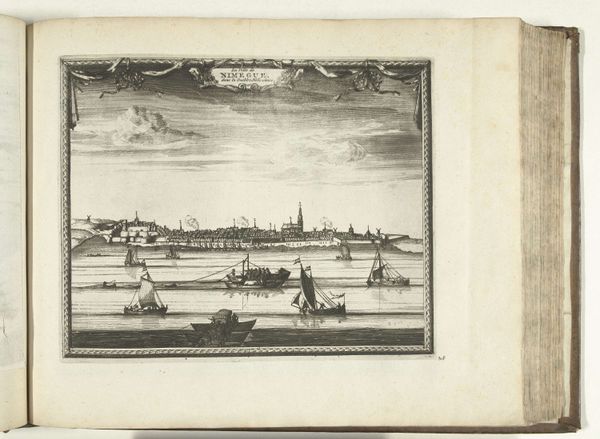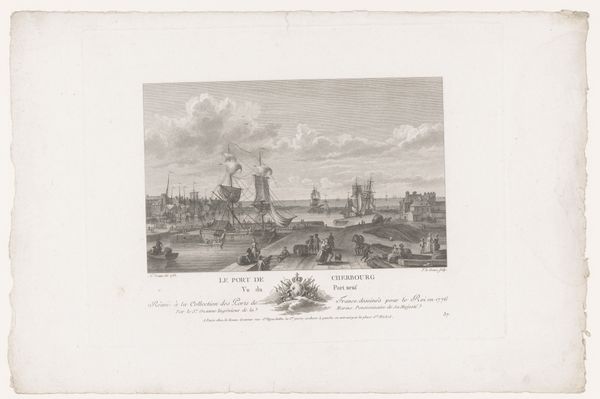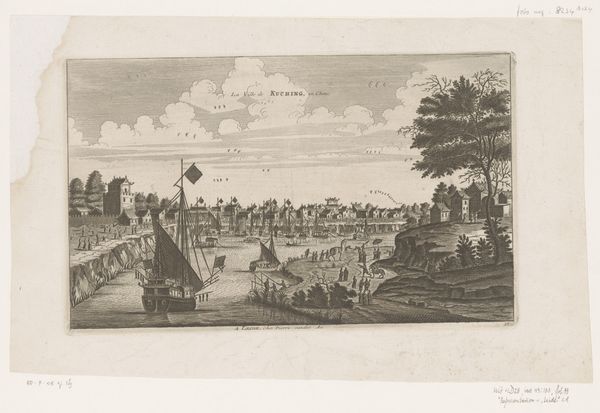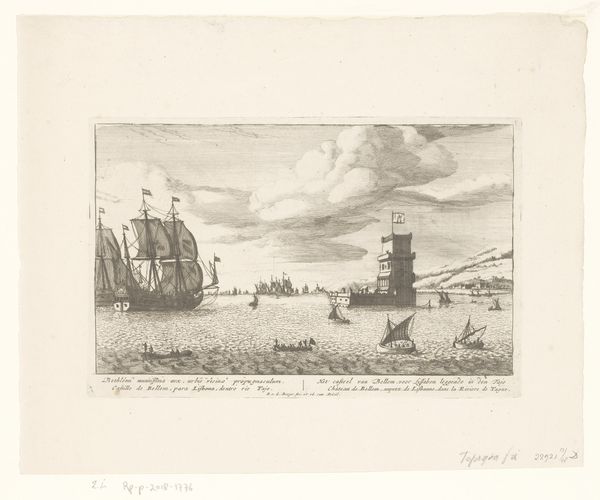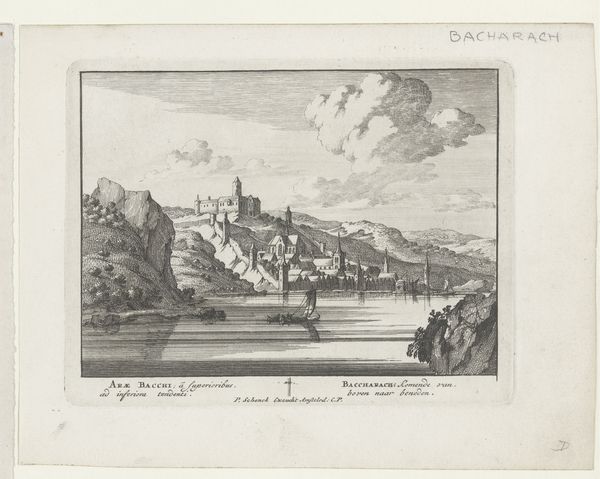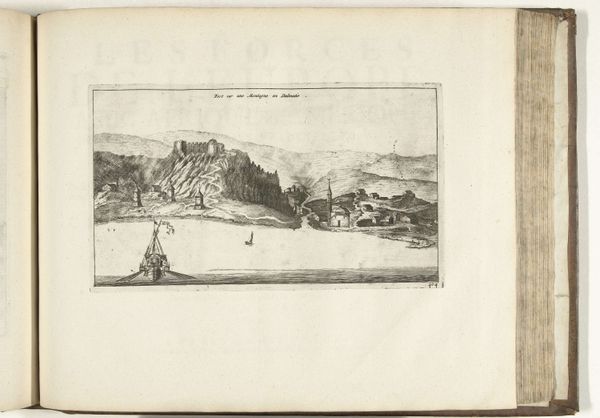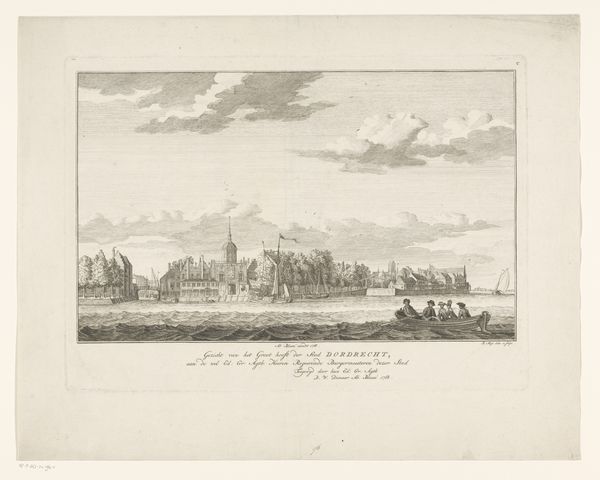
print, etching
#
aged paper
#
toned paper
#
baroque
# print
#
etching
#
landscape
#
river
#
cityscape
Dimensions: height 132 mm, width 170 mm
Copyright: Rijks Museum: Open Domain
Editor: This is "Gezicht op Bonn," a print by Pieter Schenk, dating from around 1694 to 1697. It's an etching, depicting a cityscape along a river. The detail is quite striking. What visual elements stand out to you in this piece? Curator: The composition relies heavily on the interplay between light and shadow, achieved through skilled manipulation of line. Observe how Schenk varies the density and direction of hatching to render texture and form. The tonal range, although limited to monochrome, effectively conveys a sense of depth, wouldn't you agree? Editor: Absolutely. The way the clouds are rendered with such lightness, contrasting against the darker buildings and the riverbank, really creates a dynamic effect. I’m curious, how would you interpret the spatial relationships within the composition? Curator: Notice how the river serves as a central compositional device. It's flanked by two landmasses, that draw the eye into the scene and provide visual anchoring. The artist employed strategic placement of buildings and foliage to control perspective, effectively elongating the depth. Would you say it works effectively to establish the city's presence? Editor: It does, very much. I’d initially focused on the subject of the print - the city of Bonn itself, the boats – and how the details create a captivating cityscape. But thinking about Schenk's control over perspective and composition gives it a deeper appreciation. Curator: Indeed. By examining the formal elements, we move beyond a simple depiction of place and into the realm of artistic intention. Editor: Thanks to your perspective, I notice that it’s not just what is depicted, but how it is depicted. Curator: Precisely, and in grasping how, we draw nearer to understanding the image itself.
Comments
No comments
Be the first to comment and join the conversation on the ultimate creative platform.
